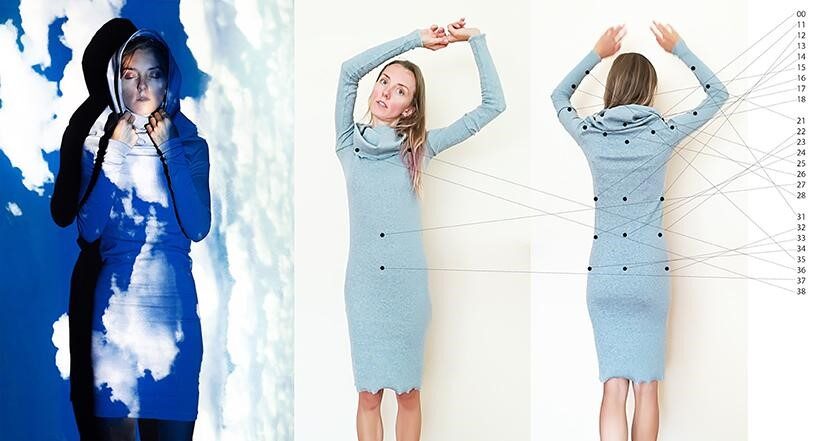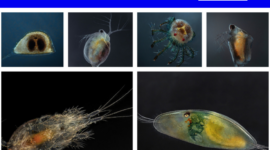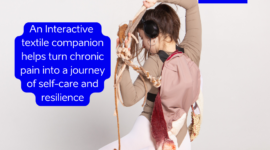Smart textile can help us gain control over our bodies using technology, fabrics and art, a research project showed.
“We believe that we have this one body, but it is actually changing all the time,” a Spanish human-computer interaction scientist Ana Tajadura-Jiménez said. Three years ago, she was in her Madrid lab with an Estonian interactive textile designer-researcher Kristi Kuusk. They were brainstorming ideas for their next project.

Tajadura-Jiménez has been studying how to alter people’s perception of themselves for many years. She works with people who are physically inactive or in pain. “I am trying to make people feel like they have a different body!” she explained. For instance, if someone may feel like they are not capable of walking for an hour, she may be able to change that.
“We can create environments where we can be anything!” Tajadura-Jiménez told Kuusk.
“Yes, even a cloud!” Kuusk responded.
This was their breakthrough moment. Making people feel like clouds sounds intriguing – but how? Tajadura-Jiménez suggested they would do it through altering senses.

They were brought together by another Estonian scientist Aleksander Väljamäe, a long-time collaborator of Tajadura-Jiménez.
Funded by VERTIGO, a project under STARTS initiative of the European Commission, the one-year-long initiative brought together scientists from three different fields: art, technology and science.
“It was a transdisciplinary project that brought in different angles and made scientists come out of their comfort zones to create something new,” Väljamäe said. He saw vibrating textile as an interesting new communication channel.
They published their work in the scientific journal Frontiers in 2020.
As an associate professor of textile design at the Estonian Academy of Arts Kuusk had worked with vibrations on the body before, so they focused on that. They wanted to create patterns with lines of vibrations that would create the sensation of growing for instance.
The scientists built on the knowledge already there. They learned which body parts are more sensitive to quivers and how far from each other the motions would have to be to create the sense of continuity.
They attached tiny vibrating motors between two layers of textile: on the center of the back, on the upper back and around the arm.
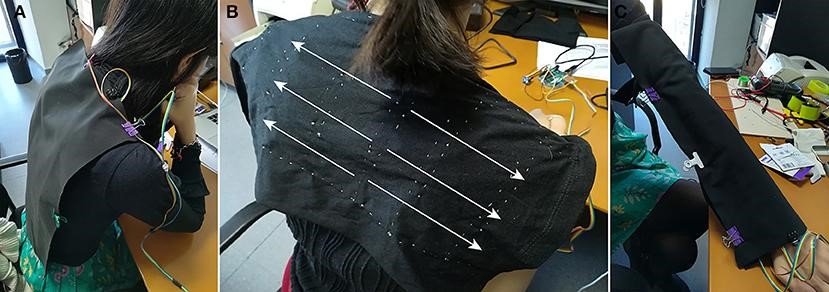
The vibrations moved in different directions, either away or towards the center of the body.
Six different motion patterns were used.
The participants of the study assessed their emotional state, body sensations and sensations of materiality before the experiment and between each pattern. Did they feel happy or maybe frightened? How light or heavy? Which set of elements did they recognise – air, water, cotton, sand, oil, wood or rocks?
Some participants said that the pattern where the vibrations started from the center of the back and moved outwards, made them feel like air. Some said they felt like water and relaxed. In contrast, the patterns moving inwards made the people feel heavy or out of control.
Different patterns also induced different material associations. Some made the people feel more like clouds, others more like water or rocks.
In the second prototype the participants touched textiles with three different vibrating patterns resembling water, cloud and rocks.

The results were incredibly clear. It is possible to change how people perceive themselves by reprogramming what they wear, the study showed. People can feel hard as rocks or light as air with a press of a button.
But not everything went like a breeze for the scientists themselves.
“We had to invent a new common language for ourselves,” said Kuusk, who studied both informatics and fashion design. “Every field has its own specific terms. Even when the words are the same, the meanings differ.”
Kuusk and Tajadura-Jiménezis spent four weeks working in the lab. “It was very intense!” they both remembered.
The team continues working together, for the moment on two other projects: Magic OutFit and the EU-funded BODYinTRANSIT.
Travelling the world
Their garments didn’t stay in the closet though.
Based on the experiments the team created a unique smart dress that they showcased around Europe. It sparked many interesting conversations.
During a workshop “Moving Humans” at Tate Modern in London the research team presented their vibrating textiles. The passers-by placed their hands on them to feel different movements like soft or robotic. Someone mentioned a purring kitten.
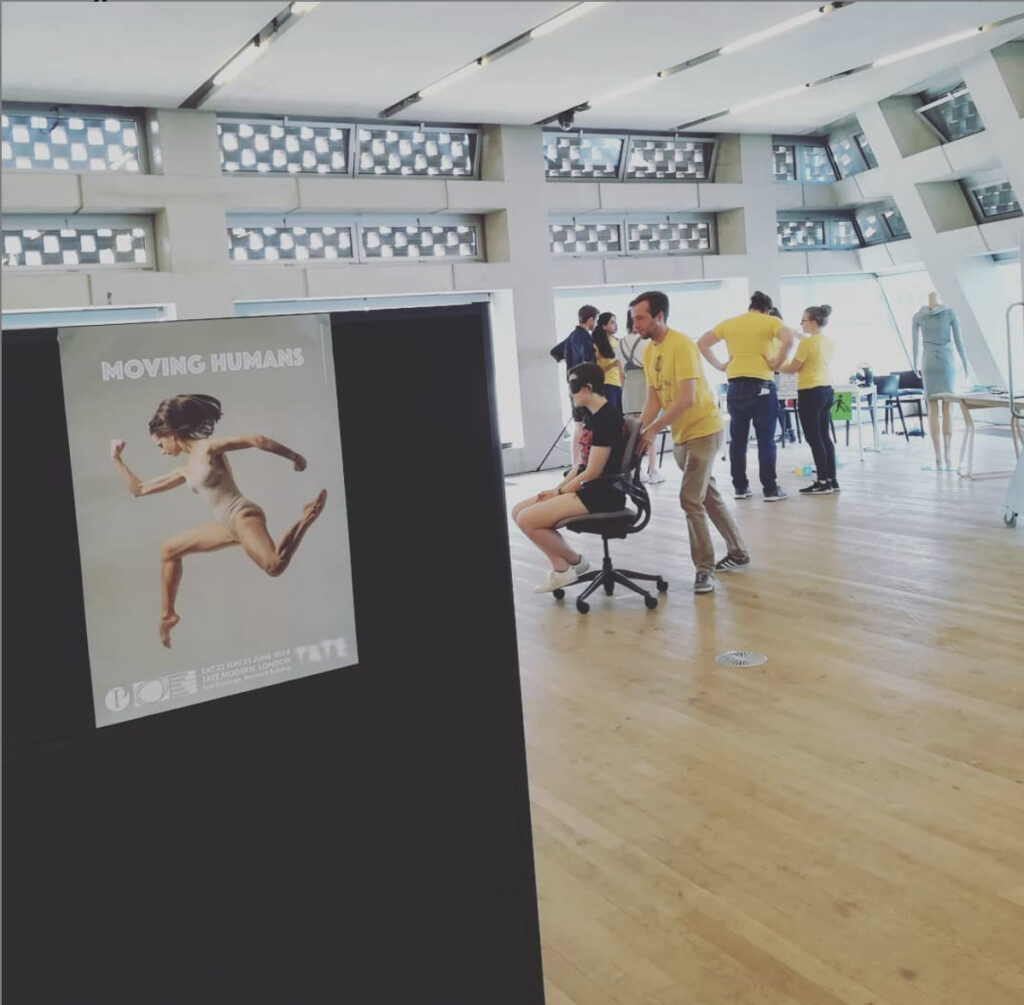
“People were intrigued by the idea, but they also had their fears,” Kuusk recalled. People were wondering how tiny motors on their bodies might affect them, how the garments could be washed or what if someone hacks their dress!
Haptic technologies and e-clothes have been taking their baby steps. In 2002 Cute Circuit’s Hug Shirt, world’s first wearable-technology fashion brand, was released. It allows the users to hug each other from a distance.
Scientists around the world are working on clothes that could support psychotherapy. An Estonian roboticist Indrek Must is working on a wearable robot made of textile.
A more famous Teslasuit collects real-time data about the user’s body and tracks their position and movements.
Even though different body enhancing smart clothes are entering the market, their possibilities are still largely unexplored. The Magic Lining project with the vibrating dress shows just how much more potential there still is.
“Imagine if this dress would be connected to your calendar one day,” Kuusk wondered. “It would know when you’ll have a job interview and boost you with confidence, or make you more focused when you work and calm down when it’s getting late.”
Kuusk, who grew up running around her parents’ sewing factory, is interested in sustainable, smart textiles. She thinks the invention could also be friendly to the environment. We would simply not need that many clothes for our different needs if we could reprogram them.
For Kuusk, the smart dress is like an extra layer of skin that takes care of its user. Not only physically, but also emotionally.
Written by: Marian Männi
This article was funded by the European Regional Development Fund through Estonian Research Council.
 Back
Back